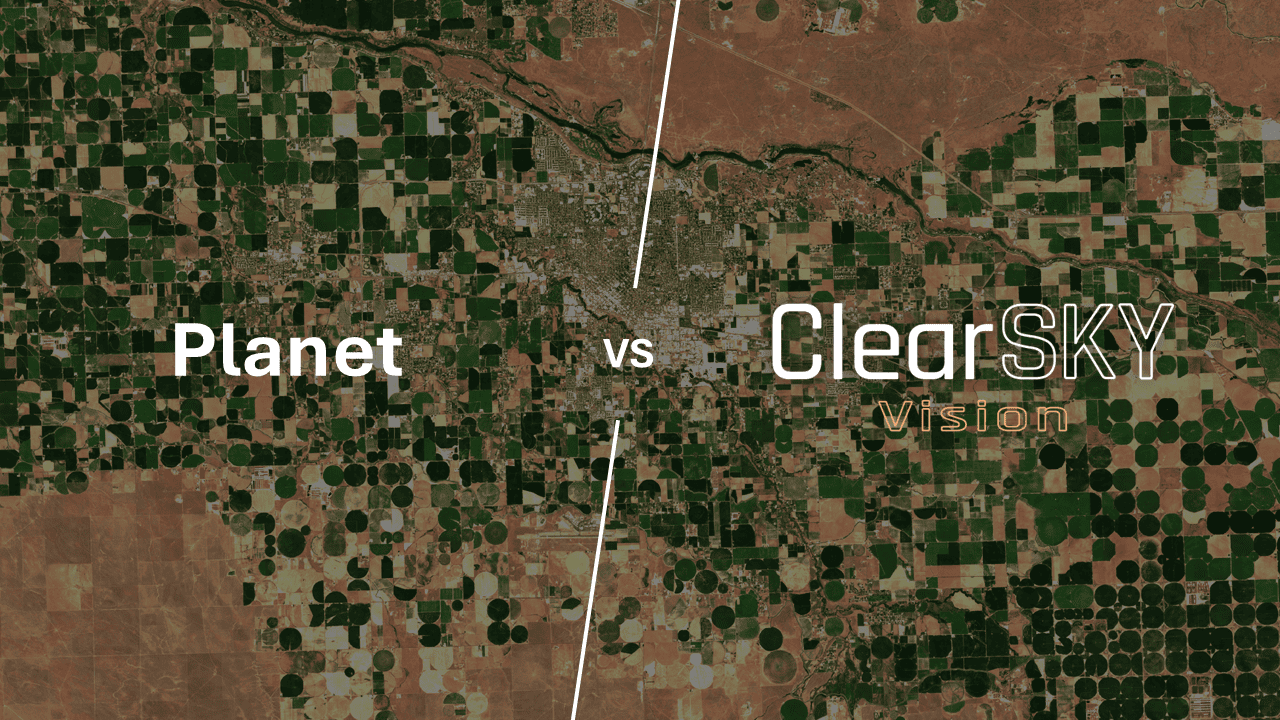Near Real-Time vs Near-Now: What Timeliness Means in Satellite Data
2025-08-13 · 5 min read · Timeliness · NRT · Near-now · Latency · Provenance · Data Fusion · Same-day · Versioning · SLA

TL;DR: Timeliness is a pipeline. Acquisition → Availability → Processing → Delivery. Define what must be ready by when, keep each step observable, and never hide a future pixel inside a product that claims to be for today.
Why timeliness matters
If your task is compliance, harvest planning, flood mapping, or any decision tied to a calendar date, hours can change outcomes. Imagery that arrives tomorrow may be interesting. Imagery that arrives today can be actionable. Near real-time delivery is not only about speed. It is about getting reliable information in time to act and being able to defend the timestamp later.
Background reading:
What is NRT? (NASA LANCE) · Copernicus Sentinel-2 docs
What the terms usually mean
The labels vary by provider, but the practical ideas are consistent.
- Real time: seconds to minutes. Think direct broadcast or alerts.
- Near real-time (NRT): same hour to same day. Uses only data available up to the cut time.
- Near-now: delivered by the end of the same calendar day for the area of interest.
- Daily batch: produced overnight for yesterday.
- Long-window mosaics: weekly or monthly composites built for coverage and aesthetics, not for a single date.
From satellite to screen
Every product passes through the same four stages.
- Acquisition. A satellite collects an image during its overpass.
- Availability. The data is downlinked and becomes fetchable in a ground system or cloud endpoint.
- Processing. Cloud and haze are detected, fusion and resampling run, and quality layers are added.
- Delivery. The result lands in your API, map tiles, or storage with metadata that proves what went into it.
These steps can be short or long. The key is that each one is observable and that the final product reports what time it truly represents.
The real tradeoff is latency, completeness, and fidelity
Think of three dials you can set for any product.
Latency is how quickly the product arrives.
Completeness is how much of the area is actually filled by usable pixels.
Fidelity to the date is how strictly the pixels come from the claimed day.
You can push two dials at once, but rarely all three. If you want very fast and very complete today, the temptation is to borrow tomorrow’s pixels. That improves coverage but breaks fidelity. The result is temporal leakage. It looks perfect, and it is wrong for today.
Same-day fusion that keeps the date honest
There are two ways to make cloudy data useful.
- Mix many dates to make a clean mosaic. This is great for basemaps and change maps where a wide window is acceptable. It blurs time by design.
- Fuse observations from the same day and only reach back when needed. This keeps the nominal date meaningful.
ClearSKY follows the second path. We pull in all same-day passes from multiple optical satellites. Clouds move and overpasses are staggered, so the chance that at least one pass sees a given parcel clearly is high. If gaps remain, we may use prior-day observations in a controlled way. We never use future acquisitions to fill today. That rule preserves a defensible date for every pixel.
Service levels you can ask for
It helps to make the service level explicit.
NRT cut. A first delivery on partial inputs so teams can act.
Near-now. A same-day delivery that includes late passes for the region.
Daily batch. An overnight delivery for yesterday with full quality checks.
Backfill. Historical jobs processed at full speed without waiting.
When you write an SLA, require per-pixel or per-tile provenance fields so you can prove which overpasses were used.
What to measure
A few simple metrics keep everyone honest.
Median and P90 latency from acquisition to delivery.
Percent of pixels from the nominal date and the percent from prior days.
Share of area with valid surface signal after masking.
Version and parameters that produced the product. If a parameter changes, the version should change.
ClearSKY in practice
Most days, ClearSKY production runs late evening or overnight so that morning decisions have same-day or previous-day evidence. When speed matters more than completeness we issue an early cut on partial inputs and reissue after late passes. For historical areas we process at full speed without delay.
Under the hood the pipeline is built for reliability and audit. Jobs are idempotent, retries are automatic, and parameters are versioned. Outputs can include per-pixel source, acquisition time, and confidence so uncertainty is visible rather than hidden.
When hours truly change outcomes
Compliance work cares about dates. If a policy requires proof by a specific date, mixing in tomorrow’s pixels undermines the evidence trail. Same-day fusion avoids that.
Operations live in short windows. A delay of twelve to twenty four hours can miss the right conditions for harvest or spraying. Timely, date-faithful imagery reduces false starts.
Events evolve. Flood extents and storm damage change quickly. Daily snapshots that truly belong to that day matter for response and for after action review.
FAQ
›Is near-now the same as NRT?
Not exactly. NRT focuses on speed from acquisition to delivery. Near-now focuses on delivering by the end of the same calendar day with a clear provenance trail.
›Can I call a product NRT if it uses tomorrow’s data?
You can, but you shouldn’t. That’s temporal leakage. It breaks the meaning of the date, even if the map looks better.
›Should I use mosaics for decisions tied to a date?
Use mosaics for context and coverage. For decisions that depend on a date, prefer same-day fusion and include provenance fields in your workflow.


